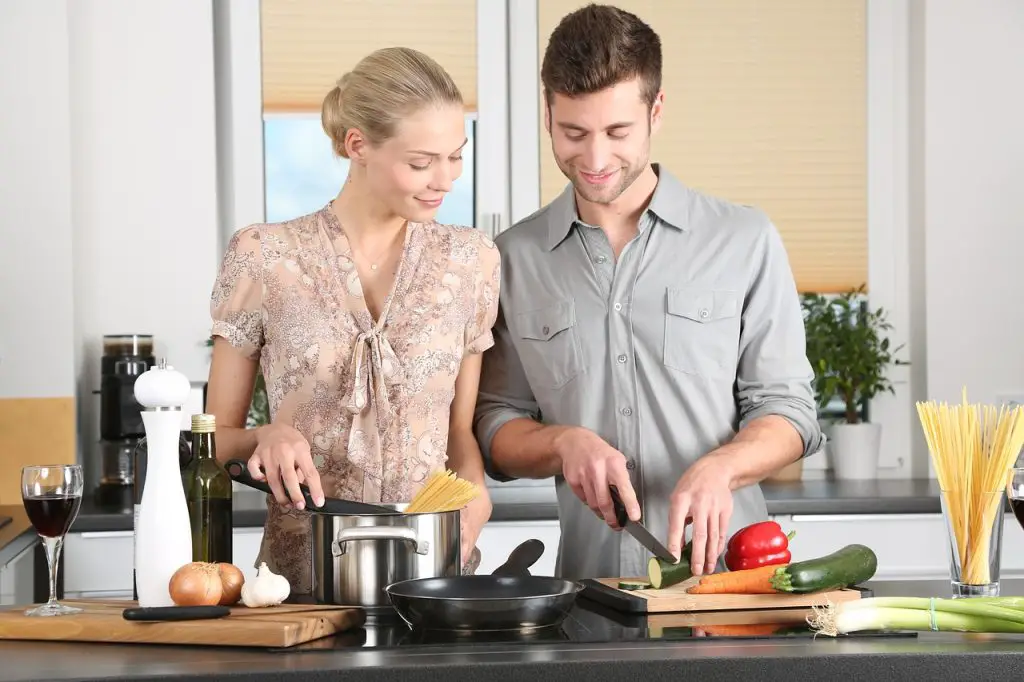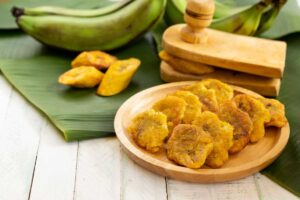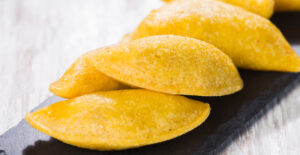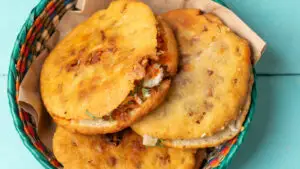Cooking is a valuable life skill that not only nourishes the body but also brings people together. Whether you’re a seasoned home chef or a novice in the kitchen, mastering the basics of cooking is essential to creating delicious and satisfying meals. In this article, we will explore the five fundamental cooking skills that every home chef should strive to master. These skills form the foundation upon which you can build your culinary expertise and explore a world of flavors and cuisines.
Knife Skills
One of the most fundamental and indispensable cooking skills is mastering the art of knife skills. A sharp knife and proper technique can make a significant difference in the efficiency and safety of your cooking. Here are some essential aspects of knife skills:
Knife Selection: Begin by selecting the right knives for the job. A chef’s knife, paring knife, and serrated knife are some of the most commonly used types. Ensure your knives are sharp to reduce the risk of accidents.
Gripping the Knife: Learn how to hold a knife properly. The most common grip is the pinch grip, where you pinch the blade between your thumb and forefinger while wrapping your other fingers around the handle.
Cutting Techniques: Familiarize yourself with basic cutting techniques, such as slicing, dicing, chopping, and mincing. These techniques are the building blocks for a wide range of recipes.
Knife Care: Regularly sharpen your knives and store them safely. Proper care will extend the lifespan of your knives and keep them in optimal condition.
Heat Control
Understanding how to control heat is another crucial cooking skill that will enable you to prepare a variety of dishes. Heat control is essential for cooking ingredients evenly and achieving the desired results. Here’s what you need to know:
Temperature Awareness: Learn to recognize and work with different temperature levels, from low to high heat. Each cooking method requires a specific temperature to achieve the best results.
Pan Selection: Different types of pans conduct and distribute heat differently. Understanding which pan to use for specific dishes is essential. For instance, a non-stick skillet is great for delicate foods like eggs, while a cast-iron skillet retains and evenly distributes heat, making it perfect for searing meats.
Stovetop Cooking Techniques: Master various stovetop cooking techniques like sautéing, frying, simmering, and braising. Each technique requires different heat levels and cooking times.
Oven Use: Understanding how to use an oven is vital for baking, roasting, and broiling. You should be familiar with oven temperatures and cooking times to avoid undercooking or overcooking your dishes.
Flavor Balancing
Cooking is as much about flavors as it is about technique. Learning how to balance flavors is a crucial skill that can transform a bland dish into a culinary masterpiece. The key components of flavor balancing include:
Salt: Salt enhances the natural flavors of ingredients and is a fundamental seasoning. However, it’s important not to overdo it, as excessive salt can overpower a dish.
Acid: Acidic ingredients like citrus juice, vinegar, and tomatoes add brightness and balance to dishes. They can cut through richness and add depth to your cooking.
Sweetness: Sweet elements like sugar or honey can balance out salty or spicy flavors. They can also enhance the overall taste of a dish.
Umami: Umami is the savory taste found in ingredients like mushrooms, soy sauce, and Parmesan cheese. Incorporating umami-rich ingredients can elevate the depth of flavor in your dishes.
Spice and Herbs: Experiment with a variety of spices and herbs to add complexity and aroma to your cooking. Be mindful of the intensity of spices to avoid overpowering the dish.
Food Safety and Hygiene
Ensuring food safety and maintaining proper hygiene in the kitchen is non-negotiable. These skills are not only important for your well-being but also for the safety of those you are cooking for. Key aspects of food safety and hygiene include:
Hand Washing: Always wash your hands thoroughly before and after handling food, especially when working with raw meats, poultry, and seafood.
Cross-Contamination: Prevent cross-contamination by using separate cutting boards and utensils for raw and cooked foods. Be mindful of cleaning surfaces that come into contact with raw ingredients.
Temperature Control: Keep perishable ingredients at safe temperatures. Refrigerate or freeze foods promptly and use a food thermometer to ensure meats and poultry are cooked to the recommended internal temperatures.
Food Storage: Properly store leftovers and perishable ingredients in airtight containers in the refrigerator or freezer to prevent spoilage.
Cleaning and Sanitizing: Regularly clean and sanitize your kitchen surfaces, utensils, and appliances to prevent the growth of harmful bacteria.
Timing and Organization
Effective time management and organization are the keys to cooking efficiently and producing well-coordinated meals. Whether you’re preparing a simple weekday dinner or a multi-course feast, these skills will help you stay on track:
Mise en Place: This French term means “everything in its place.” It involves prepping and measuring all your ingredients before you start cooking. This approach streamlines the cooking process and reduces the likelihood of mistakes.
Timing: Practice the art of timing by coordinating the preparation and cooking of multiple components of a dish. Understanding when to start each element ensures that everything is ready at the same time.
Meal Planning: Plan your meals in advance, taking into account the ingredients you have on hand and any dietary restrictions or preferences. Meal planning can save you time and money while minimizing food waste.
Multitasking: As you gain confidence in the kitchen, you’ll become better at multitasking. This skill allows you to work on multiple aspects of a meal simultaneously, increasing efficiency.
Mastering the five fundamental cooking skills discussed in this article—knife skills, heat control, flavor balancing, food safety and hygiene, and timing and organization—will lay a solid foundation for your culinary journey. As you continue to develop your expertise, you’ll find that these skills are not only essential but also interconnected, allowing you to create delicious and satisfying meals with confidence and creativity. Cooking is a lifelong learning process, and honing these skills will enable you to explore a world of flavors and cuisines while delighting your taste buds and those of your loved ones. So, roll up your sleeves, sharpen your knives, and start cooking with passion and purpose.
Additional Tips and Resources for Aspiring Home Chefs
While the five fundamental cooking skills mentioned above are essential for every home chef to master, there are plenty of additional tips and resources to help you refine your culinary abilities and explore the world of cooking even further.
Cooking Classes: Consider enrolling in cooking classes or workshops in your local area or online. These courses can provide hands-on experience and guidance from experienced chefs, allowing you to deepen your skills.
Cookbooks: Invest in a variety of cookbooks that cater to different cuisines and cooking styles. Cookbooks not only provide recipes but also valuable insights into cooking techniques and flavor combinations.
Practice, Practice, Practice: The more you cook, the better you become. Don’t be discouraged by occasional failures or mistakes in the kitchen. Learning from these experiences is an important part of improving your cooking skills.
Experimentation: Don’t be afraid to experiment with new ingredients, flavors, and techniques. Some of the most innovative and delicious dishes come from chefs who are willing to take risks and try something new.
Food Blogs and YouTube Channels: There is a wealth of information available online through food blogs and YouTube channels dedicated to cooking. Many of these resources provide step-by-step tutorials, recipe inspiration, and cooking tips.
Culinary Equipment: Invest in quality kitchen tools and equipment. While you don’t need to break the bank, having the right tools can make cooking more enjoyable and efficient.
Taste Testing: Taste your dishes throughout the cooking process and adjust seasonings as needed. Developing your palate is a crucial part of becoming a skilled chef.
Cultural Exploration: Explore the cuisines of different cultures. Trying out recipes from various parts of the world can expand your culinary horizons and introduce you to new ingredients and techniques.
Networking: Connect with other food enthusiasts, both online and offline. Joining cooking forums, social media groups, or local cooking clubs can provide valuable insights, inspiration, and a sense of community.
Seasonal and Local Ingredients: Whenever possible, use seasonal and locally sourced ingredients. They are often fresher and more flavorful, contributing to the overall quality of your dishes.
Patience and Perseverance: Remember that becoming a skilled home chef is a journey that takes time. Be patient with yourself and keep honing your skills through regular practice.
Sharing Your Creations: Share your culinary creations with friends and family. Their feedback can provide valuable input and motivate you to keep improving.
In conclusion, cooking is a dynamic and rewarding skill that can bring joy to your life and the lives of those you cook for. By mastering the five fundamental cooking skills—knife skills, heat control, flavor balancing, food safety and hygiene, and timing and organization—you’ll be well on your way to becoming a confident and creative home chef. Embrace the journey of exploration and discovery in the kitchen, and remember that the learning process is as enjoyable as the delicious meals you’ll create along the way. Happy cooking!




